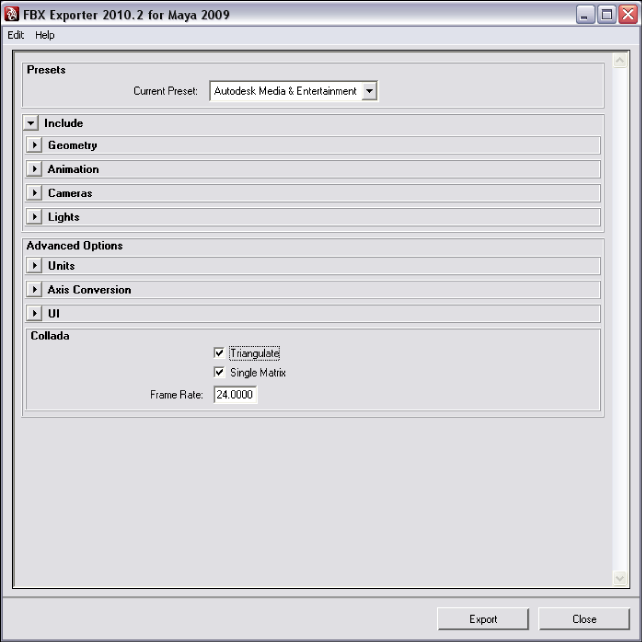

In Sansar, 3D models must be in FBX (.fbx) or OBJ (.obj) file format. This article provides tips on setting up and exporting 3D models from popular 3D tools such as Maya, 3ds Max, and Blender.

These settings will be adjusted in the following steps, which will cause the Current Preset to change to User defined. Select File Type Specific Options > Presets > Current Preset > Autodesk Media & Entertainment to select suitable default settings for importing to Qt Design Studio.In the Files of type field, select FBX export.In the File name field, enter a name for the export file.Select Window > Settings/Preferences > Plug-in Manager and check that the fbxmaya.mll plugin is enabled.These instructions apply to Autodesk Maya 2020. This would result in the same texture existing in three locations on your computer: the original location, embedded in the scene, and extracted into the asset import folder.

For example, including embedded media in your export simplifies moving the scene to another computer but increases the file size as well as the loading time of the scene since the textures need to be extracted before they can be imported to the scene. The optional steps should only be applied if required by the project. To export certain elements of your design, such as geometry, animations, and textures, you need to adjust the settings for FBX exports under File Type Specific Options in Maya export options. If you want to use a non-default position for a pivot point, you have to adjust it in Maya before exporting your assets. We recommend using default pivot points in your designs to avoid problems when importing to Qt Design Studio. For more information, see Maya documentation. To include frozen transformations in your export, select Modify > Freeze Transformation in Maya before exporting your assets. Maya exports the transformation as given by the scene. The necessary plugin is usually enabled by default, but you can check that in the plugin manager. You can export graphics from Maya in the FBX format.


 0 kommentar(er)
0 kommentar(er)
